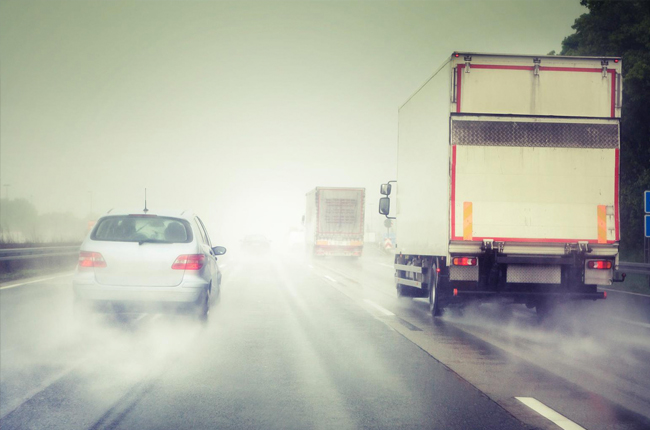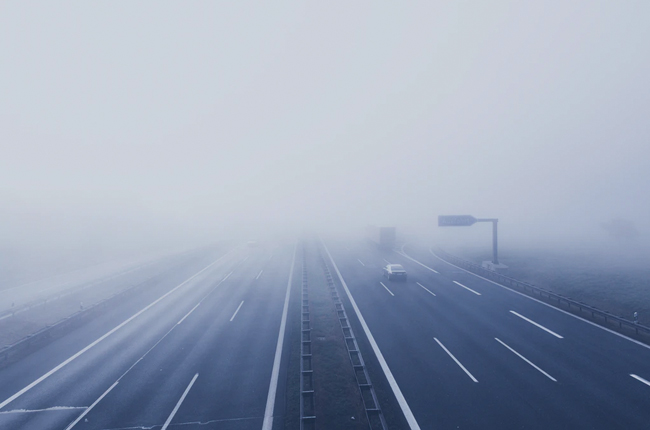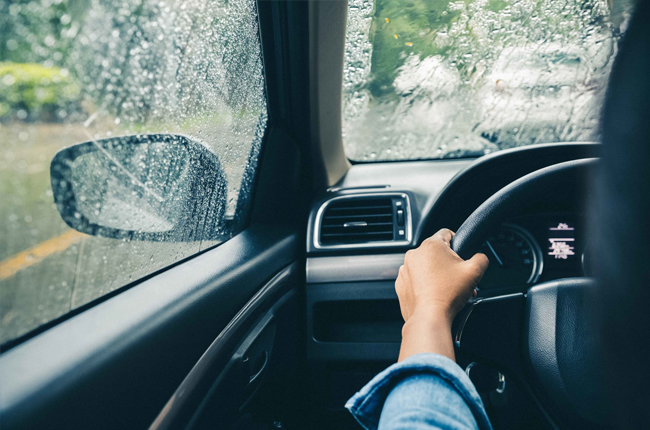
Anyone who's driven in the Philippines knows that the weather can be unpredictable, and poor visibility can happen suddenly. One minute it’s clear, and the next, you’re peering through a misty windshield. Yeah, it happens a lot around here, especially with our wild weather. Driving under such conditions requires not only good judgment but also an understanding of safe driving practices. Before you find yourself struggling to see the road ahead during a sudden fog or heavy rain, familiarize yourself with these useful tips that will help you drive more safely and confidently.
Mind your speed.

When visibility is affected by fog or a heavy rainstorm, reducing your speed is the first thing you should do. Lower speeds give you more time to react to unexpected obstacles, such as flooded roadways or debris. It's helpful to recognize that speed limits are set for ideal situations, so adjusting your speed to less than the posted limit is really useful when you have poor visibility. Additionally, slowing down helps prevent hydroplaning in wet conditions, where your vehicle might lose contact with the road surface, leading to loss of control.
Driving at reduced speeds in low visibility allows for better management of your vehicle's stopping distances. As visibility decreases, your perception-reaction time increases, meaning you need more distance to safely react to and avoid obstacles. Besides, not all drivers have nearly the same amount of visibility as you do and some may not even have the same fast reflexes. That being said, by reducing your speed, you lower the risk of you ending up in a rear-end collision or even being the cause of a much bigger accident. It’s ok to take it slow and not rush as you will still be able to make it to your destination.
Switch on your lights

Turning on your headlights in low visibility is a no-brainer because it helps other drivers see you coming. Using your vehicle’s lights effectively can improve your visibility to other drivers without impairing your own sight. In foggy or rainy conditions, always use your low-beam headlights. High beams can reflect off moisture in the air, creating glare and making it harder to see. If your car has fog lights, use them—they are made to cut through the fog and provide illumination close to the ground, helping to see the road surface and edges.
Remember, the goal of using your lights in poor visibility is not just to see better, but also to be seen. Headlights and rear lights make your vehicle visible from a distance, reducing the risk of collisions. It’s a common misconception that lights should only be used when darkness falls; in reality, they are safety tools in any condition that impairs visibility.
Should you switch on your hazard lights?

"Safety first!" as some may mumble while reaching for the hazard light switch. The thing with hazard lights is they’re really meant to tell other drivers that you’ve stopped or are moving quite slower than traffic, especially in an emergency. When driving in low visibility, using hazard lights while in motion can send the wrong message to other drivers, potentially causing confusion and accidents. Instead, use your regular vehicle lights to remain visible and only use hazard lights if you are stopped or need to indicate a true emergency.
Technically, the continuous use of hazard lights can disable the functionality of your turn signals, making it difficult for other drivers to anticipate your next movement. It’s important to communicate clearly on the road, especially in low visibility. If visibility is so poor that you feel hazard lights are necessary, consider pulling over safely until conditions improve.
Make sure to put enough space between you and the car ahead

It's simple: the less you can see, the more space you should leave between you and the car in front. Why? Because more space means more time to react. So, in conditions of reduced visibility, the distance between your car and the one in front should be increased. Following too closely can lead to rear-end collisions if the leading vehicle brakes suddenly. Maintaining a greater following distance gives you more time to react and stop safely.
A practical way to gauge a safe distance is to use the three-second rule. Pick a fixed point that the vehicle ahead passes, such as a sign or a tree, and count the seconds it takes for you to reach the same point. During poor visibility conditions, consider extending this to five seconds. This method adjusts for speed and helps you keep a distance that allows enough reaction time.
Stay in your lane

When it’s hard to see, the last thing you want to do is lane-hop. Lane markings are added to guide you, even in challenging conditions. Avoid changing lanes unless absolutely necessary. If you must change lanes, do so with great care. Signal properly and sufficiently in advance, at least 30 meters away before you intend to make the switch. Assess the taillights in front of you before you make any moves. Use your side and rearview mirrors to check for any vehicle behind you so that you can properly indicate your intent to change. Remember to move over when you are a hundred percent sure that the lane is clear.
Do not overtake

Overtaking in low visibility is a big no. Even if it looks clear, you never know when a car with dim headlights might appear out of nowhere. Stay patient, stay in your lane, and wait until the visibility clears up before you think about passing. Always assume there could be slower-moving or stalled vehicles ahead in your lane.
The rule of thumb is if you cannot see the road conditions clearly ahead or the rear lights of the vehicles in front of you fade into the distance, do not attempt to overtake. Keeping a safe following distance and waiting until visibility improves ensures a higher level of road safety for everyone involved.
Just relax

Lastly, keep your cool. Being tense can make you react more slowly or jerkily, which isn’t great when driving conditions are tough. Keep a light grip on the wheel, sit back, and breathe. Focus on maintaining a calm breathing pattern if you start to feel stressed. Remind yourself that the conditions will improve soon enough, and keeping calm will help you think clearly and drive safely.
Relax, don't panic. The rainstorm will pass, the fog will dissipate, and you'll get to your destination – just take care and follow these tips.
Latest Features
-
The difference between wax and polish / Tips & Advice
Confused about whether your car needs a wax or polish? This article will guide you on what they are and what to choose for your car.
-
The 6 things every Ford Ranger must pass before it leaves the factory / Featured Article
Every Ford Ranger, from the base model to the Ranger Raptor, goes through a full inspection process before it leaves the factory. This includes six steps that make sure it’s ready to drive a...
-
Which GAC AION EV is best for your everyday lifestyle? / Featured Article
The GAC AION lineup has something for everyone, maybe you're after space, speed, or just a smooth city drive. Here's a quick breakdown of which model might work best for your day-to-day life...
Popular Articles
-
Cheapest cars under P700,000 in the Philippines
Jerome Tresvalles · Sep 02, 2024
-
First car or next car, the Ford EcoSport is a tough package to beat
Jun 18, 2021
-
Car Maintenance checklist and guide – here’s everything you need to know
Earl Lee · Jan 12, 2021
-
Most fuel efficient family cars in the Philippines
Bryan Aaron Rivera · Nov 27, 2020
-
2021 Geely Okavango — Everything you need to know
Joey Deriquito · Nov 19, 2020
-
Family cars in the Philippines with the biggest trunks
Sep 20, 2023
-
Head to head: Toyota Rush vs. Suzuki XL7
Joey Deriquito · Oct 28, 2020
-
Why oil changes are important for your car
Earl Lee · Nov 10, 2020
-
2021 Kia Stonic — What you need to know about it
Joey Deriquito · Oct 16, 2020
-
Top 7 tips for buying a used car in the Philippines
Joey Deriquito · Nov 26, 2020




